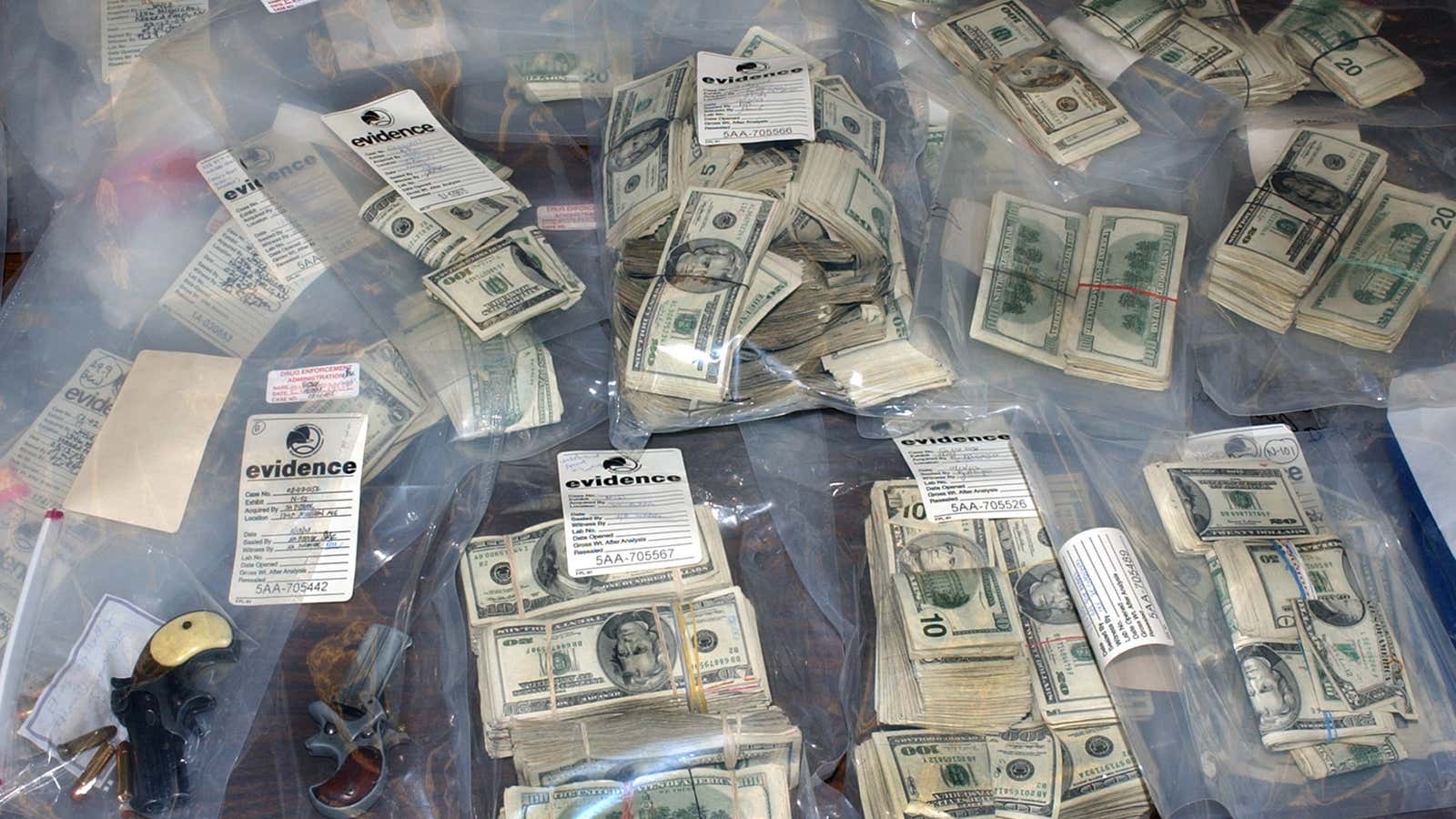Fear is the great motivator and money is fear’s greedy little brother. Fear of not having enough money can make a person do the unthinkable, like rob, cheat, and steal. But a question that’s haunted criminologists for decades is what amount of money will make a person take that leap.
Large criminal enterprises aren’t known for their rigorous accounting practices, and burglars aren’t apt to leave receipts. And try as they might—there’s even a line for it on the US income tax reporting form—the Internal Revenue Service simply can’t get criminals to comply and report their illegal earnings as taxable income on a consistent basis. This means the best resources criminology researchers have on illegal earnings are usually surveys of actual criminals, mostly after they’ve been caught.
But any survey is problematic, and surveys of criminals doubly so, because they involve a group of respondents who are by definition untrustworthy, and prestige and street-cred are built-in motivators to inflate one’s stats. Inversely, a fear of punishment could cause one to understate their role in any crime. Thus, any research attempting to reach a definitive number on the weekly take-home of your run-of-the-mill street criminal is met with healthy dose of skepticism.
Holly Nguyen, a criminologist from University of Pennsylvania is “cautiously optimistic” that she and her collaborator, Thomas Loughran of the University of Maryland, have designed a study to produce a fairly accurate estimation of a low-level criminal’s average weekly income. In a paper published last week in the journal Criminology, the researchers compared the findings of two previous surveys that collected self-reported illegal earnings. After developing a system to account for inflated outliers, Nguyen and Loughran found that low-level criminals, that commit nonviolent crimes like selling drugs, robbery, burglary, and check forging, pull in $900 a week on average.
The 2010 Pathways to Desistance study followed nearly 370, overwhelmingly male and black or Hispanic subjects from Phoenix, Arizona, and Philadelphia, Pennsylvania. It questioned, among other things, the nature of and earnings from their illegal and legal work. The National Supported Work Demonstration, published in 1980, had 15 reporting sites, and though the nearly 1,200 survey respondents were not all convicted criminals, they did all have a history of employment problems; they were asked about illegal activities and earnings. Again the subjects were overwhelmingly male and either African American (79%) or Hispanic (6%).
In order to account for self-reported exaggeration, or participants’ faulty memories, the researchers took advantage of a nuance of these two studies. Both surveys asked respondents to estimate their illegal take-home using one measure of time—either days, weeks, or months—and then in another, completely separate part of the questionnaire, asked for the same thing, but in a different measure of time. The researchers argue that it’s hard to imagine that respondents would remember to exaggerate in exactly the same way for both. By comparing the responses from the two answers, both within each study and to previous studies that estimated illegal earnings, Nguyen said she and Loughran were able to home in on the answer.
Nguyen began the work as a skeptic. “I was pretty surprised at how consistent the findings were across the two datasets. I didn’t expect that at all,” she explains. But that consistency made her a believer, and she now says the number can be a “reliable tool for future study.”
For example: around half of the total respondents lacked a high school diploma. Add to that the fact that high school dropouts in the US can expect to earn less than $400 dollars a week legally and that even finishing and getting a high school diploma pushes the needle only slightly to $638, it’s painfully easy to see why people would risk their freedom, and sometimes even their lives, to work on the wrong side of the law.
